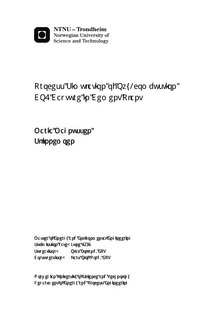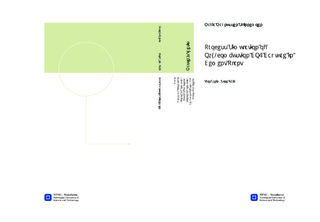| dc.description.abstract | The objectives of this master thesis have been to model and simulate oxy-combustion CO2 capture in a cement plant. The model developed is a process simulation of the calcination process with varying degree of air in-leakage, where heat is supplied by combustion in an oxygen rich environment, followed by capture of the CO2. The further gas separation after H2O condensation to achieve the required CO2 quality was evaluated. In addition to the process simulations, a review of literature related to oxy-combustion CO2 capture and cement production was performed, and an engineering evaluation of the necessary modifications to the cement plant conducted.A simulation model was built in Aspen HYSYS, and student Jelmer de Winter s project work was utilized as a starting point. The model was developed with the aim to achieve results comparable to a process model constructed by the European Cement Research Academy (ECRA) in 2009. The goal was to capture as much of the CO2 as possible, and to achieve a CO2 purity of minimum 95 mol-% after the CO2 Compression and Purification Unit (CPU).CO2 purity in the dry flue gas of ~85 mol % was achieved, with a CO2 capture rate up to 96.4 %. Five different air in-leakages (2, 4, 6, 8 and 10 % of total flue gas flow) were tested. The results showed that the CO2 concentration in the flue gas decreased with increasing degree of air in-leakage. The decrease in CO2 concentration causes an increase of the power consumption of the CO2 CPU of ~2.6 % per percentage point of air in-leakage, and the CO2 capture rate was also reduced when the air in-leakage increased. These results agree well with results from previous oxy-combustion studies, and show the importance of minimizing air in-leakages in the cement plant.If oxy-combustion capture is to be utilized at a cement plant, some process modifications and additional equipment is required. An Air Separation Unit (ASU) is needed to provide almost pure oxygen for the combustion process. A Compression and Purification Unit (CPU) is also required, in order achieve the necessary CO2 purity and transport conditions. When using oxy-combustion technology, both the material conversion in the cement kiln system and the operational specifications of the overall process are different from those in conventional kiln operation. However, research made by ECRA in 2012 showed that the negative impacts of oxy-combustion on the product quality seem to be negligible.Other necessary process modifications when retrofitting with oxy-combustion are news design of the kiln burner and the clinker cooler in the cement plant. In addition, prevention of excessive air in-leakage by improving sealing locations at the cement plant is necessary, as the simulation results show. This is possible e.g. by waste gas flushed systems, or by an improved maintenance of inspection doors and similar devices. The CPU is up to a certain point capable of handling changes in the flue gas composition at short-term inspections; however it limits its efficiency. | nb_NO |

